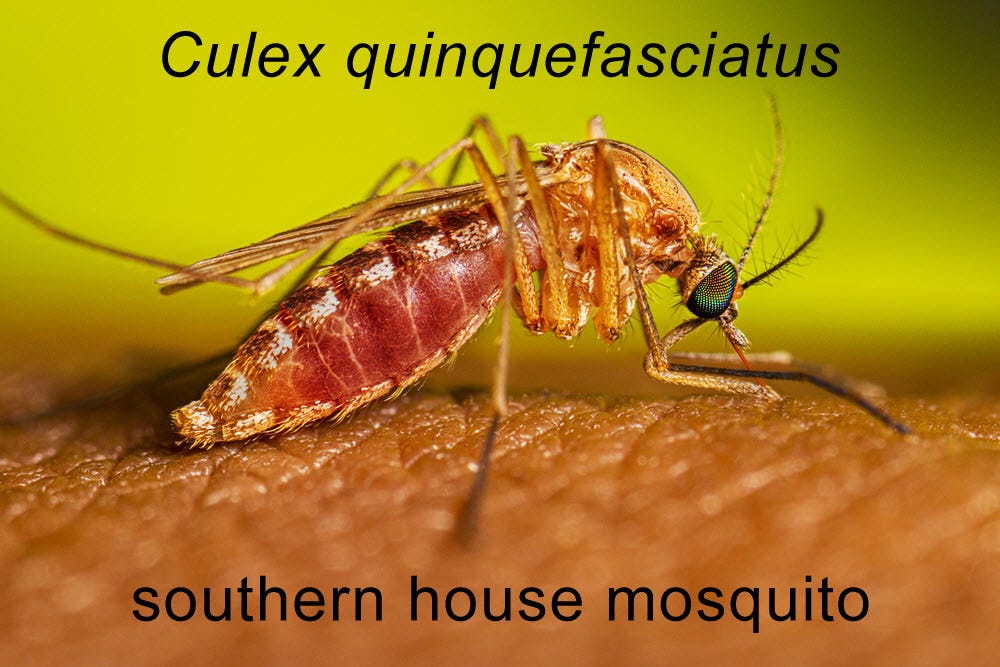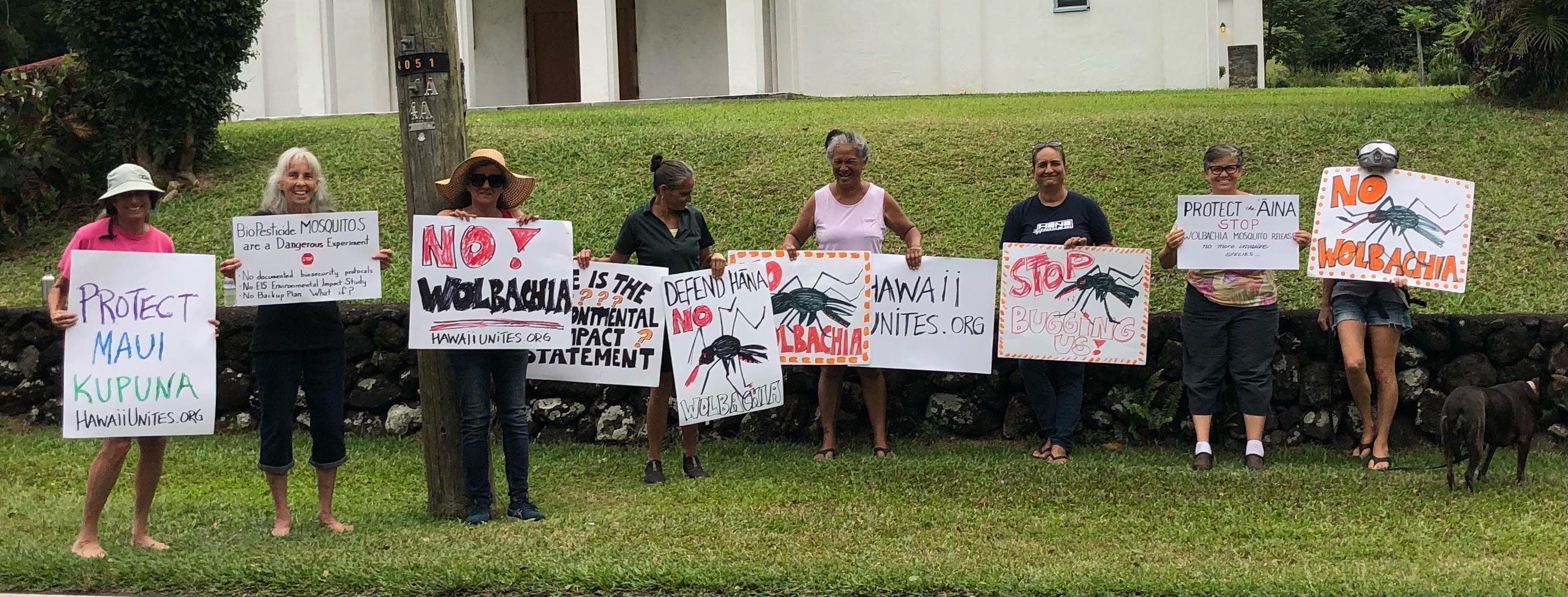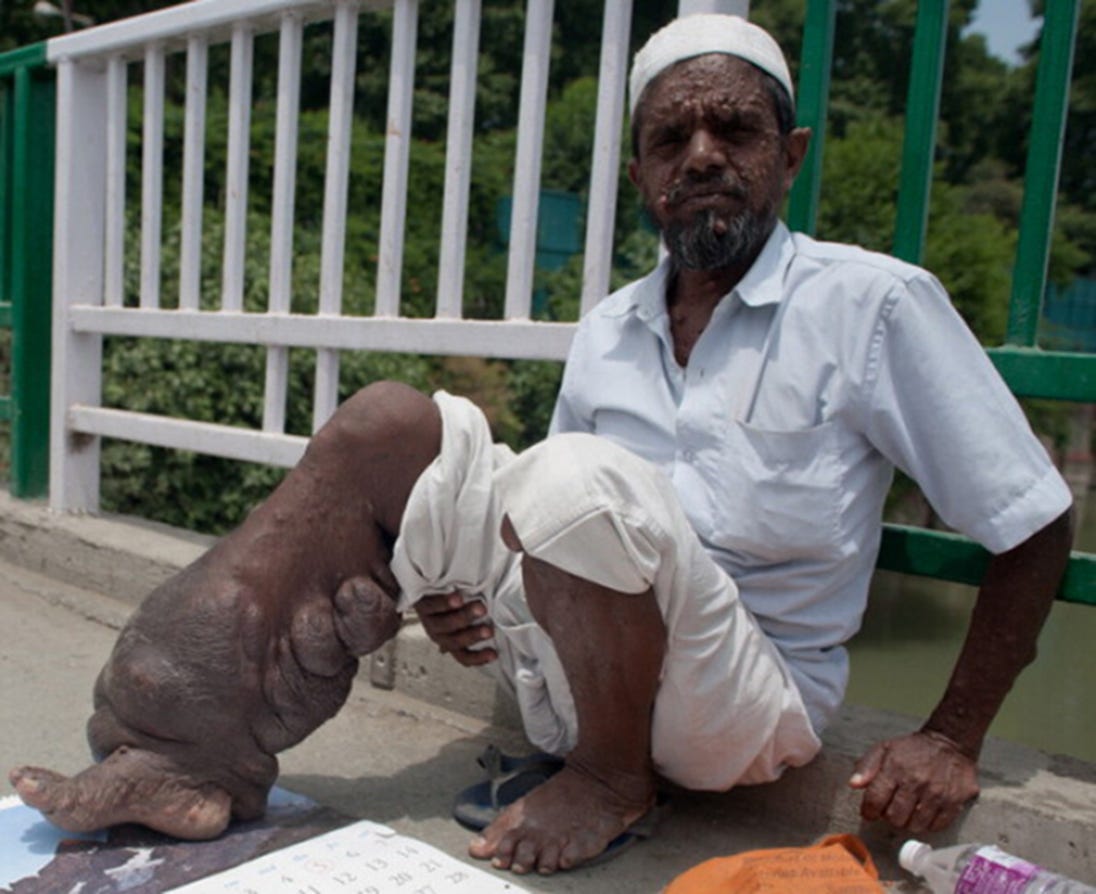Wolbachia Pest
Genetic engineering on its highest level is taking place in Hawaii.
Be informed and donate, if you can.
The donation-link is below.
I have the impression, Hawaii United is a trustworthy and responsible organization.
Tina Lia very thoroughly researches the dangers to life on the Hawaiian islands.
![]()
The state has filed a motion for summary judgment seeking a ruling in their favor rather than the case going to trial. We need your support to continue our legal action to require an EIS.
Court Decides on January 17th if our Mosquito Case Moves ForwardThe state has filed a motion for summary judgment seeking a ruling in their favor rather than the case going to trial. We need your support to continue our legal action to require an EIS.
This Wednesday, January 17th, Hawai‘i’s environmental court will hear a motion for summary judgment filed by the State of Hawai‘i in our case against them. Hawai‘i Unites’ case seeks a ruling that the state and its multi-agency partnership Birds, Not Mosquitoes be required to complete an environmental impact statement (EIS) for their dangerous bacteria-infected mosquito release project on Maui. In filing their motion, the state is now asking the court to rule in their favor on the case without going to trial. Our legal team has responded with a strong opposition to the state’s motion. We want this case to be heard, and we’re asking to move forward with completion of discovery. There are many questions still left unanswered by the state, and there are important documents requested through discovery that have not yet been provided to us. Hawai‘i Unites needs your support to keep our legal case going. These lab-altered mosquitoes could have significant impacts to our environment and to the health of Maui’s people, wildlife, and fragile ecosystems. What is the state trying to hide by attempting to stop this case from going to trial? Hawaii Unites is a reader-supported publication. To receive new posts and support our work, consider becoming a free or paid subscriber.
In July 2023, a hearing began for our motion for temporary restraining order and preliminary injunction to stop the release of mosquitoes in East Maui. On the first day of the hearing, I took the stand to testify about the research I’ve been doing on the risks of these mosquito releases – research that includes the information found in the documents of the agencies involved in the project, along with peer-reviewed studies and scientific expert opinions. One of those scientists, tropical disease and vector expert Dr. Lorrin Pang, testified on our behalf as an expert witness. What was described in our testimony are serious concerns about the risks of these mosquitoes and the bacteria they’re infected with, and the fact that the state has not taken the time to do the comprehensive studies of these risks that could cause irreversible harm to our community and ‘āina. Our hearing was scheduled to continue in August but was postponed due to the tragic fires in Lahaina. That hearing is now scheduled to continue next month, but if the state gets its way with a ruling for summary judgment this Wednesday, we won’t even have the opportunity to hear testimony from the state’s witnesses or to cross-examine those witnesses. We recently learned that these agencies have no intention of taking responsibility for the effects of their Wolbachia bacteria-infected mosquitoes on forest birds. The southern house mosquitoes being released on the Hawaiian Islands transmit diseases to birds and other animals, and to people. The state’s environmental assessment for mosquito releases on Kaua‘i specifies that monitoring the response of the birds is “outside the scope of the proposed action.” Is there any reason to believe that this monitoring will be part of the actions on Maui? If they won’t even monitor the birds, who can we expect to take responsibility for the effects on the islands’ people? As we’ve repeatedly pointed out to these agencies, this project has the potential of causing the extinction of the native birds its meant to protect, and it could impact human health. Peer-reviewed studies have shown that Wolbachia bacteria can cause increased pathogen infection in mosquitoes and can cause mosquitoes to become more capable of transmitting avian malaria and West Nile virus (bird and human).
East Maui speaks out against bacteria-infected mosquito releases These mosquito releases on Maui are planned to continue for at least the next 20 years, with up to 775,992,000 mosquitoes unleashed weekly. That adds up to over 807 billion mosquitoes over the duration of the project. Worse yet, we discovered that the state has a lab here in Hawai‘i that has been funded to build out an insectary where they plan to mass produce lab-altered mosquitoes for release on the islands “into perpetuity” (forever). That includes plans to produce and release gene drives, synthetic biology control tools, and a CRISPR-Cas9 mosquito gene editing technology called precision-guided Sterile Insect Technique (pgSIT). Among the concerns presented in our case include the fact that the mosquitoes currently being released are experimental and have never been documented as used for stand-alone field release; the 64,666-acre East Maui project area is the largest Wolbachia mosquito release of any kind globally to date; the state has lied about the fact that foreign bacteria is being brought into Hawai‘i through the infection of these mosquitoes, and the mosquitoes themselves are foreign organisms that originate from outside the islands; and the state has also lied about the documentation showing that up to 3,103 lab-altered female mosquitoes that bite, breed, and spread disease are allowed to be released weekly on Maui. There are no biosecurity protocols for these imported mosquitoes and no mitigation plan in place if something goes wrong. Wolbachia bacterium is a life form, and there’s no way for this project to be self-contained. The bacteria can transmit horizontally in the environment to wild mosquitoes and other insect vectors of disease. Mosquito populations on Maui might be overtaken and replaced by these lab-altered mosquitoes. What if it turns out that they are more capable of spreading disease? Southern house mosquitoes transmit human diseases including West Nile virus, encephalitis, and elephantiasis, and they’re a potential vector of Zika virus.
Elephantiasis Pathogen screenings for these mosquitoes are unknown, and that information is being withheld from the public. Lab-infected male mosquitoes can transmit viruses to biting females through mating. Biopesticide drift, the drift of lab-altered mosquitoes on the wind to unintended areas, could affect not only the efficacy but the safety of the project. Superinfection of mosquitoes with multiple strains of Wolbachia bacteria could also impact efficacy and safety. All of these mechanisms can interact with each other and cumulatively have substantial adverse effects. None of this has been studied by the Birds, Not Mosquitoes agencies releasing these mosquitoes. That’s why we’ve taken the state to court. The Board of Land and Natural Resources never should have approved this project. The scope and magnitude of this plan have potential significant impacts that could cause catastrophic effects on the health of our islands. Additionally, we have reason to believe that contrary to the approved final environmental assessment (FEA), mosquitoes are being released solely by helicopter rather than drones up to this point. It also appears that the release system described in the FEA is not the system being used, and that the helicopters are flying closer to the tree canopy than the level stated in the FEA. This deviation from the approved plan increases the potential for adverse impacts such as noise disturbances; nesting, breeding, and roosting disturbances; helicopter rotor wash; accidents and collisions; and wildland fires. Further, the battery-operated mosquito traps being transported are thought to be hazardous materials that bring additional fire risks, as evidenced by an accidental fire on September 22, 2023 caused by one of the “action packers” containing a 12V deep cycle battery. Comprehensive studies of the risks, as required by the Hawai‘i Environmental Policy Act (HEPA), are needed. Safer alternatives must be explored. Please stand with Hawai‘i Unites in demanding an environmental impact statement for this project. Help us move our legal case forward by donating to our organization and supporting the work that we’re doing to protect the ‘āina and our island’s people from this dangerous biotech experiment. Maui is ground zero for these mosquito releases, and our case in environmental court can set a strong precedent for stopping this agenda from moving forward here in Hawai‘i and from expanding globally. This case, and our voices as a community, have a right to be heard. Mahalo, Hawai‘i Unites is a 501(c)(3) nonprofit organization dedicated to the conservation and protection of our environment and natural resources. Your tax-deductible donations help us to fulfill our mission of honoring and protecting our sacred connection to the natural world. |






